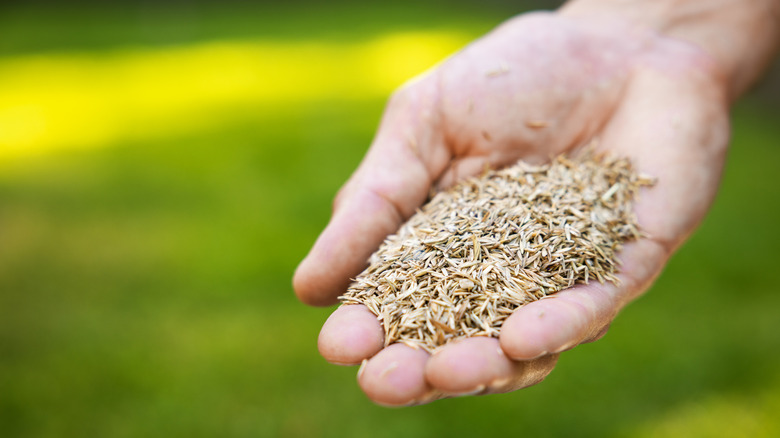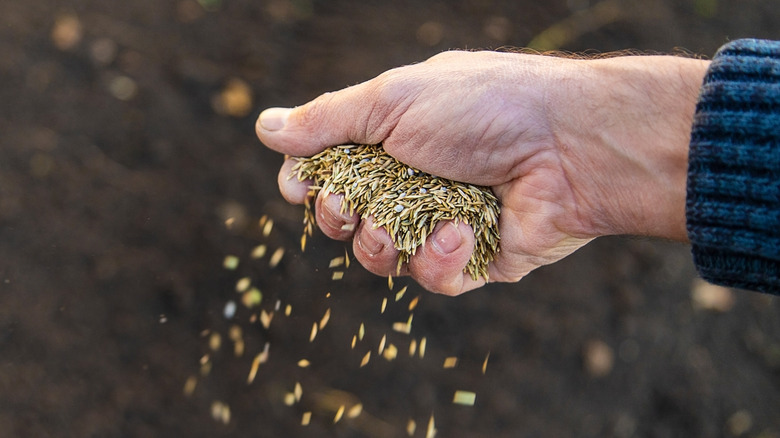What Happens To Your Lawn When You Sow Grass Seed On Top Of The Soil
We may receive a commission on purchases made from links.
Taking care of your yard can be hard work. And following the best practices for lawn care starts before your turf is even established. You've likely heard that simply direct sowing your grass seed onto your bare soil isn't the right way to grow a healthy lawn. Considering how easy it is, though, you may have still been tempted to give it a try. While just tossing the seeds on top of the soil and hoping for the best may result in some grass germinating and growing, it's likely to lead to a far sparser lawn than you would have by following the recommended steps for establishing turfgrass.
Considering how expensive some grass seeds can be, you don't want to throw your money away by not giving them the best chance possible to germinate and grow into a lush lawn. To germinate, grass seeds need good contact with the soil, something that is unlikely to happen if you just toss the seeds without properly preparing the site first. However, if you take the time to properly prepare your soil and seeds the right way, you can be quite successful in growing a lawn by broadcast seeding.
Preparing your yard for broadcast sowing seeds
Timing is important for broadcast seeding, and fall is generally the best time of year for it, though spring is your second-best option. Avoid trying to start your grass seed during the summer. To give your seeds the best chance, it's important to aerate your soil before planting. This is also when to dethatch your lawn, so the buildup of plant material won't prevent the seeds from making contact with the soil. You can also add starter fertilizer (like Scotts Turf Builder starter) to help nourish your lawn. This is especially important if you're trying to grow a lawn from poor soil.
If you are concerned about weeds outcompeting your grass seedlings, you should use a weed killer before you start. Wait about two weeks after using the herbicide to sow your grass seeds, and, of course, follow all instructions on the packaging. If you have any grass already growing and you're sowing more seeds to thicken your lawn, make sure it has been mowed down to a height of about 2 inches. Once your site is properly prepared, you're likely to have far more success with your broadcast sowing.
Sowing your grass seed
Once you've prepared your soil, you're ready to begin sowing your grass seed. While you can do this by hand, it's generally best to use a machine like a broadcast spreader if you have a large area to cover. Once you've sown your seeds, you may want to use a lawn roller to help push them down and ensure they have good soil contact. While not strictly required, rollers, spreaders, and other tools are helpful for planting grass seed. Additionally, pick a day without any wind or breeze for your seed sowing to prevent the seeds from blowing away.
After sowing and rolling your grass seed, water it daily and limit foot traffic for at least a month. It's important to continue to mow the lawn to a height of about 2 inches for several weeks, as it keeps taller grass from shading out your seedlings. With time, patience, and a little effort, you should eventually be the proud owner of a lush, full lawn.


